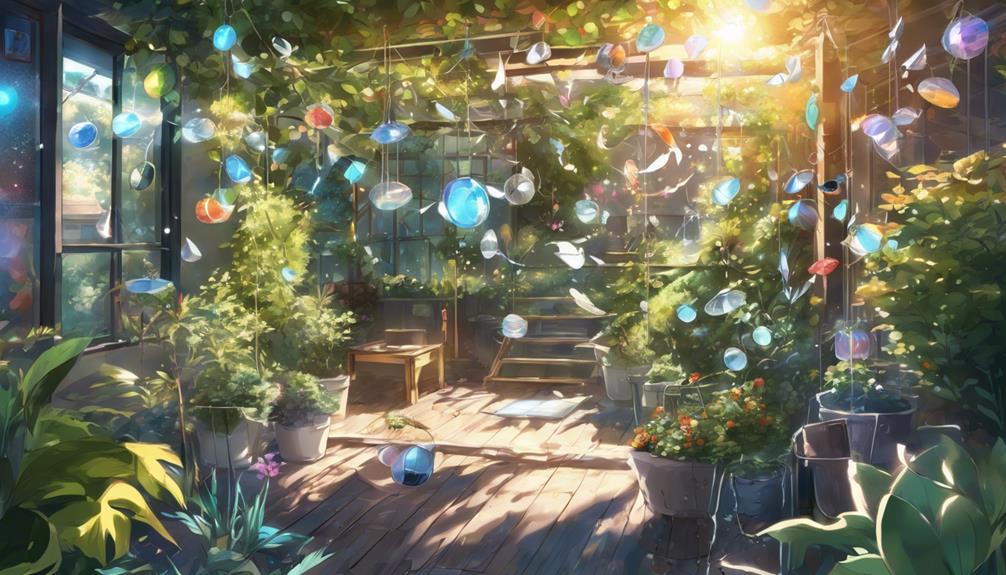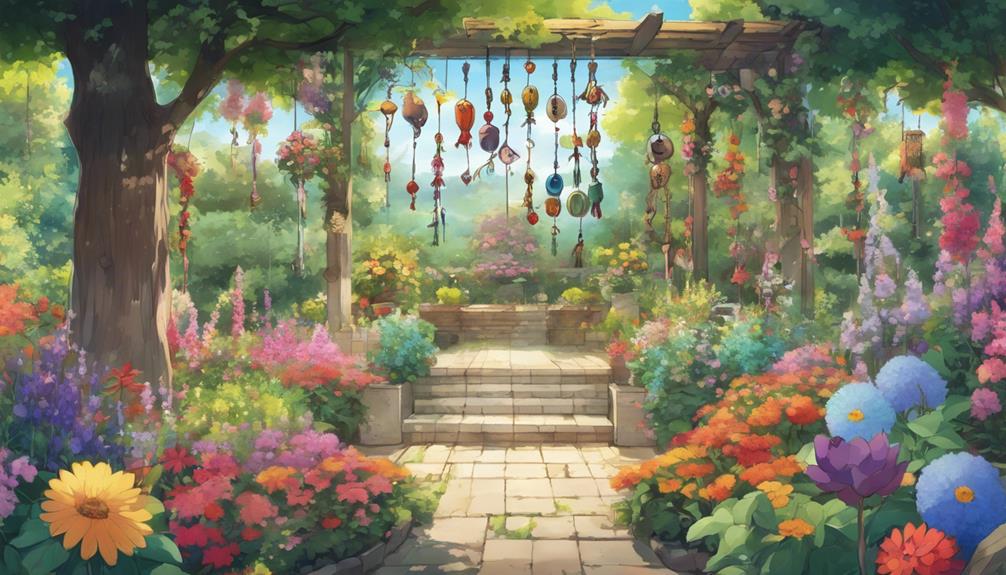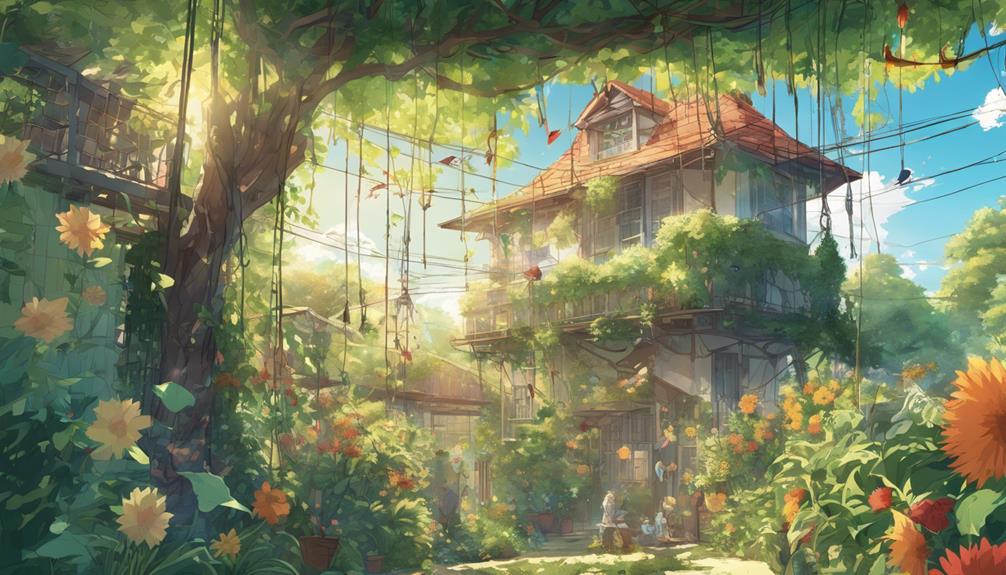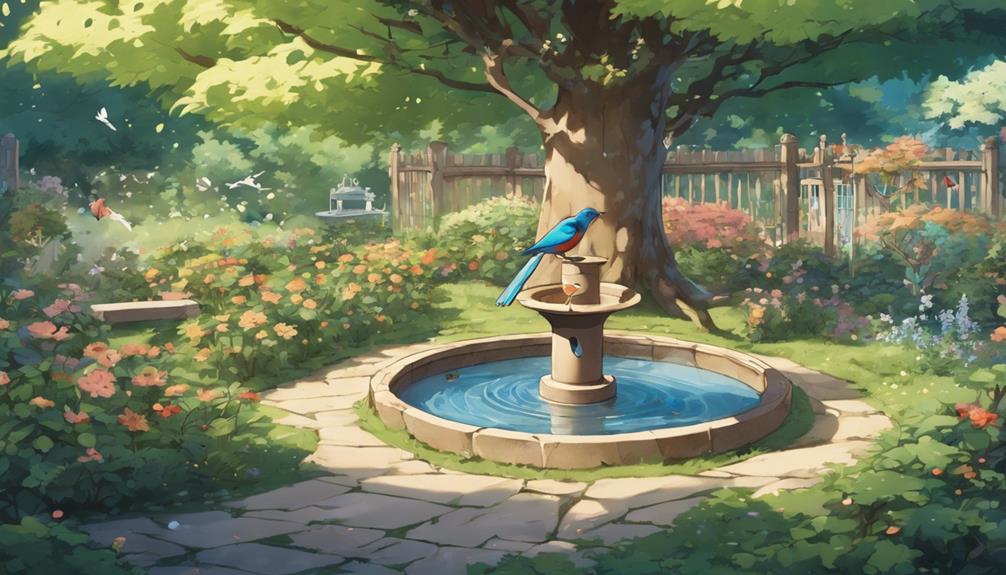You’ve likely declared war, albeit silently, against the feathered foes that feast in your vegetable garden as if it were their personal buffet. While you can’t turn your green oasis into an impenetrable fortress, there are clever strategies you can employ to keep these winged invaders at bay.
Whether it’s through the strategic placement of decoy predators to scare them off or using reflective deterrents that confuse and deter, you’re not without options. But the real question remains: how do you implement these solutions effectively without turning your garden into a scene from a sci-fi movie?
Well, lets have a look at how to achieve that delicate balance, ensuring your garden thrives bird-free.
Keeping Birds Out
- Utilizing bird netting and physical barriers effectively protects crops and seedlings from birds.
- Reflective deterrents and decoy predators can visually discourage birds from entering garden areas.
- Auditory deterrents, including noise-making devices, are useful in keeping birds at bay by exploiting their sensitive hearing.
- Incorporating scent-based solutions and sustainable practices fosters a bird-resistant yet environmentally friendly garden.
Utilizing Bird Netting

Bird netting is a timeless solution for safeguarding gardens. It’s a highly effective and humane way for gardeners to protect their crops from birds.
Bird netting is commonly used in gardens to protect crops and fruits from being eaten or damaged by birds. Here are a few reasons why bird netting is used to keep birds out of gardens:
- Protection: Bird netting creates a physical barrier that prevents birds from accessing and damaging crops, fruits, or vegetables in the garden.
- Deterrence: The presence of bird netting can deter birds from entering the garden in the first place, as they are less likely to attempt to navigate through the netting.
- Cost-effective: Bird netting is a relatively affordable and reusable solution for protecting plants from bird damage, making it a cost-effective option for gardeners.
- Non-toxic: Bird netting is a non-toxic way to keep birds out of the garden, unlike chemical deterrents that may be harmful to birds and the environment.
- Easy to install: Bird netting is easy to install and can be draped over plants or structures in the garden without causing damage.
Overall, bird netting is an effective and environmentally friendly method to protect your garden from bird damage. Here are a few tips for successfully using it to keep the birds away:
- Choose the Right Type of Bird Netting: There are different types of bird netting available, so it is important to choose the right one for your garden. Look for a durable, UV-resistant netting that is specifically designed to keep birds out.
- Measure the Area to Be Covered: Before installing the bird netting, measure the area of your garden that needs protection. Make sure to account for any structures or plants that the netting will need to go around.
- Install Support Structures: To effectively install bird netting, you will need to set up support structures such as poles or stakes around your garden. These structures will provide the framework for securing the netting.
- Secure the Netting: Once the support structures are in place, drape the bird netting over them. Make sure to securely attach the netting to the support structures using clips or ties. Ensure that there are no gaps or openings where birds could enter.
- Anchor the Bottom of the Netting: To prevent birds from getting underneath the netting, anchor the bottom edges to the ground using stakes or weights. This will create a barrier that birds cannot easily penetrate.
- Regularly Inspect and Maintain the Netting: Check the bird netting regularly to make sure it is securely in place and free from any damage. Repair any holes or tears promptly to maintain its effectiveness.
- Remove the Netting When Necessary: While bird netting is a great way to protect your garden, it is important to remove it when not needed, such as during the flowering period when pollinators need access to your plants.
- Combine with Other Bird Deterrents: In addition to bird netting, consider using other bird deterrents such as scarecrows, reflective tape, or bird repellents to enhance the protection of your garden (more details about these below).
By following these steps, you can effectively utilize bird netting to keep birds out of your garden and protect your important crops from damage. In addition to bird netting, there are also other human methods available to you too.
Installing Reflective Deterrents

Another effective strategy, installing reflective deterrents can significantly reduce bird presence in your garden by using light and movement to your advantage.
Birds are naturally deterred by unexpected flashes of light and the illusion of movement, making reflective items an excellent choice for keeping your garden safe and serene.
When considering which reflective items to use, here are a few effective options:
- Shiny Balloons: Their movement and reflection in the sunlight can scare birds away.
- Reflective Tape: Hang this around your garden to create moving flashes of light.
- CD Mobiles: These utilize CDs to reflect light and move in the wind, providing an effective deterrent.
- Reflective Wind Chimes: Not only do they create movement and light, but the sound also helps to deter birds.
It’s important to position these deterrents strategically around your garden for maximum effect. You’re not just protecting your plants; you’re encouraging birds to find safer, more suitable environments for themselves. This approach, combining compassion with practicality, ensures that you and the local wildlife can coexist peacefully.
‘Did You Know? Some bird species, like pigeons and crows, are highly intelligent and can quickly adapt to common scare tactics. Using a variety of deterrent methods can help to keep them on their toes and away from your garden.’
Introducing Decoy Predators

After exploring the use of reflective deterrents, consider augmenting your strategy with decoy predators to further protect your garden from unwanted avian visitors.
Decoy predators, such as plastic owls or snakes, are fantastic tools for mimicking natural threats and can significantly enhance your bird deterrent efforts. These visual deterrents play a crucial role in making your garden less appealing to birds looking for a place to feed or nest.
Here are a few ideas to use decoy predators effectively:
| Decoy Type | Tips for Use |
|---|---|
| Plastic Owls | Place in visible areas; move every few days |
| Snakes | Scatter around garden beds |
| Moving Decoys | Use mechanisms to simulate movement |
| Scarecrows | Dress brightly; change position regularly |
Keep in mind that some birds are able to recognize decoy predators over time, so it’s important to move them around regularly to maintain their effectiveness.
Creating Noise Barriers

To effectively protect your garden from feathered intruders, consider implementing noise barriers as a strategic deterrent. By disrupting their peaceful environment, noise barriers make birds feel threatened and unwelcome, encouraging them to find more serene spots. But don’t worry, using noise to keep birds at bay is both humane and eco-friendly, aligning with your compassionate values.
Here are a few effective options you can try:
- Hang aluminum pie plates or bread ties around your garden. Their unexpected sounds can startle birds.
- Deploy audio deterrent products that emit distress sounds, specifically targeting the bird species you’re trying to deter.
- Incorporate shiny ribbon or Mylar balloons which, when moved by the wind, create unsettling noises and reflections.
- Consider pie plates not just for their noise but also for the flashing light they cast, adding an extra layer of deterrence.
Birds have highly sensitive hearing, making them particularly responsive to sound-based deterrents.
Erecting Physical Obstructions

While using noise barriers as a method to deter birds from your garden offers a humane approach, don’t overlook the effectiveness of erecting physical obstructions like netting or fences for added protection. By incorporating items like chicken wire or bird netting, you’re not only safeguarding your plants but also maintaining an environment that’s unwelcoming to unwanted avian visitors.
Here are a few ideas to get you started:
| Obstruction Type | Description |
|---|---|
| Chicken Wire | Lay it over vulnerable plants to create a bird-resistant barrier. |
| Inverted Crates / Cups | Perfect for covering seedlings and protecting them from birds. |
| Netting Framework | Constructed with bamboo poles or stakes to deter birds from the entire garden area. |
| V-shaped Tents | Ideal for rows of seedlings, providing a physical barrier against birds. |
Constructing a netting framework or utilizing chicken wire are practical steps you can take to prevent birds from wreaking havoc in your garden. Remember, it’s about creating a balance where you can enjoy the fruits of your labor without causing harm to the local wildlife.
Your garden is a place of belonging, for you, not for the birds looking for their next meal.
‘Did You Know? Some bird species can eat up to 20% of their body weight in food each day, making them efficient foragers and potentially troublesome garden visitors!’
Offering Alternative Feeding Stations

By setting up alternative feeding stations stocked with bird-friendly seeds and nuts, you can effectively divert birds away from your garden crops. This method not only protects your produce but also caters to the needs of our feathered friends, creating a win-win situation for both parties.
Positioning these feeders away from your garden entices birds to a different area, reducing the chance they’ll snack on your vegetables or fruits.
To ensure success, consider these four crucial steps:
- Choose a variety of bird feeders that cater to different species by offering a range of bird-friendly seeds and nuts.
- Place the feeders at a safe distance from your garden to discourage birds from visiting the crops while still providing them with a reliable food source.
- Regularly replenish the food to keep the birds interested and returning to the alternative feeding area instead of your garden.
- Monitor bird activity at the feeding stations to assess the effectiveness of this approach and make any necessary adjustments.
Providing alternative feeding stations can also help you observe a wider variety of bird species in your backyard, adding to the enjoyment of bird watching and creating a more diverse ecosystem.
Cultivating Bird-Repellent Plants

After exploring alternative feeding stations, another effective strategy for keeping birds out of your garden involves cultivating plants that naturally repel them.
Marigolds, with their strong scent and unpalatable taste, act as a formidable deterrent. These vibrant flowers not only add beauty to your outdoor space but also play a crucial role in keeping birds away.
Incorporating sunflowers can create a natural barrier that certain birds will think twice before crossing. Their tall and dense nature offers a dual purpose – attracting pollinators while shielding your garden. Similarly, lavender plants, aside from repelling birds, invite beneficial insects, enhancing the health and appeal of your garden.
For those seeking more tips for keeping birds at bay, consider daffodils and rosemary bushes. Daffodils are toxic to many bird species, making them an excellent choice for protecting your plants as they will naturally avoid them. Rosemary, with its strong aroma and prickly leaves, further discourages bird visits.
While bird netting and butterfly netting are practical solutions, integrating these bird-repellent plants provides a natural and attractive option. It’s a compassionate way to maintain your outdoor space, ensuring it remains a sanctuary for you, not for the birds encroaching on your hard work.
‘Did you know? Some birds have a highly developed sense of smell, making the scent of certain plants particularly effective in repelling them from your garden.’
Compassionate Bird Deterrents
Wrapping up, it’s clear that keeping birds out of your garden doesn’t mean you can’t enjoy their beauty. By creatively combining netting, reflective deterrents, decoy predators, noise barriers, physical obstructions, alternative feeding stations, and bird-repellent plants, you’ll protect your garden while coexisting peacefully with these feathered friends.
Remember, it’s all about balance and understanding nature’s rhythm. So, approach this with a compassionate mindset, and you’ll find a harmonious solution that benefits both your garden and the local bird population.
